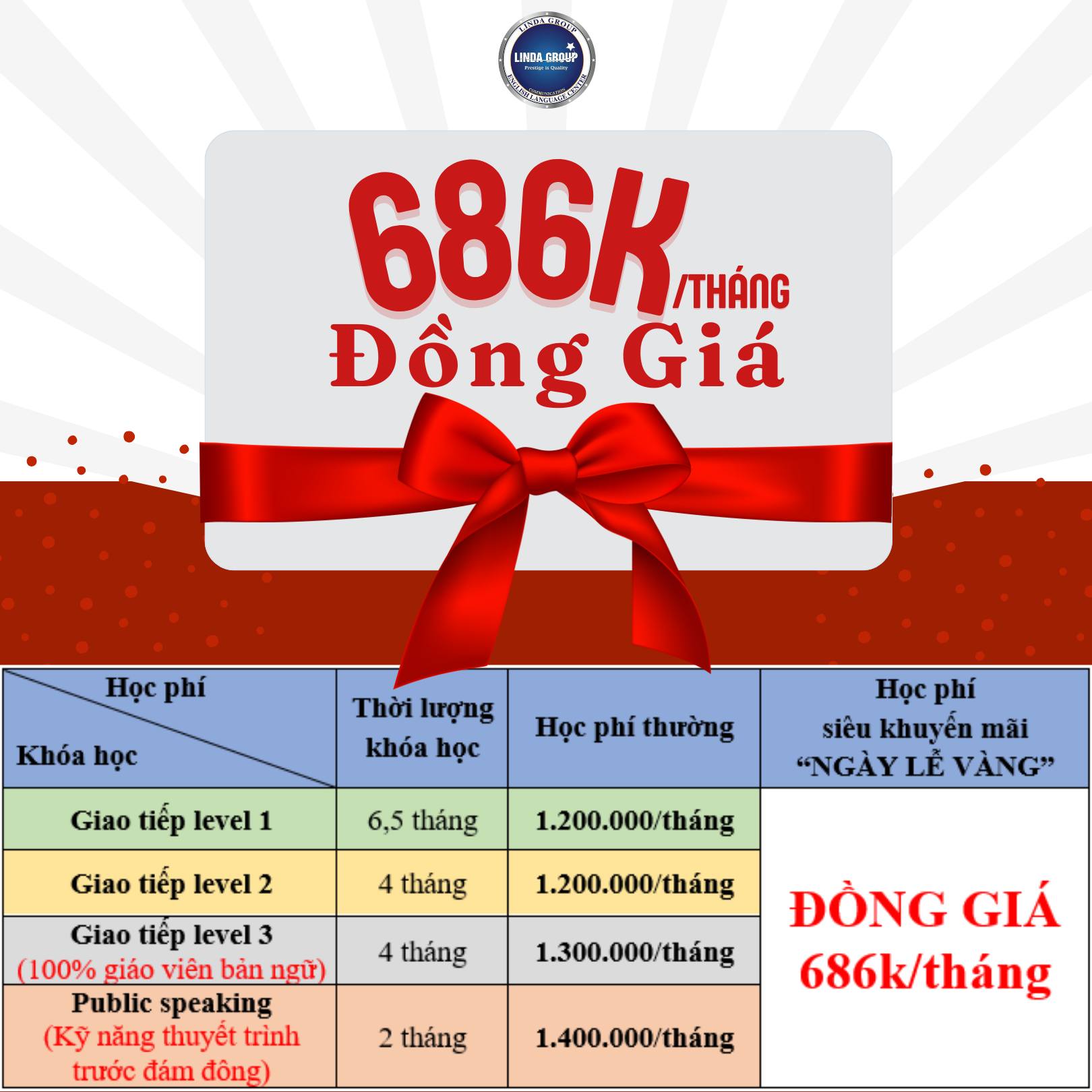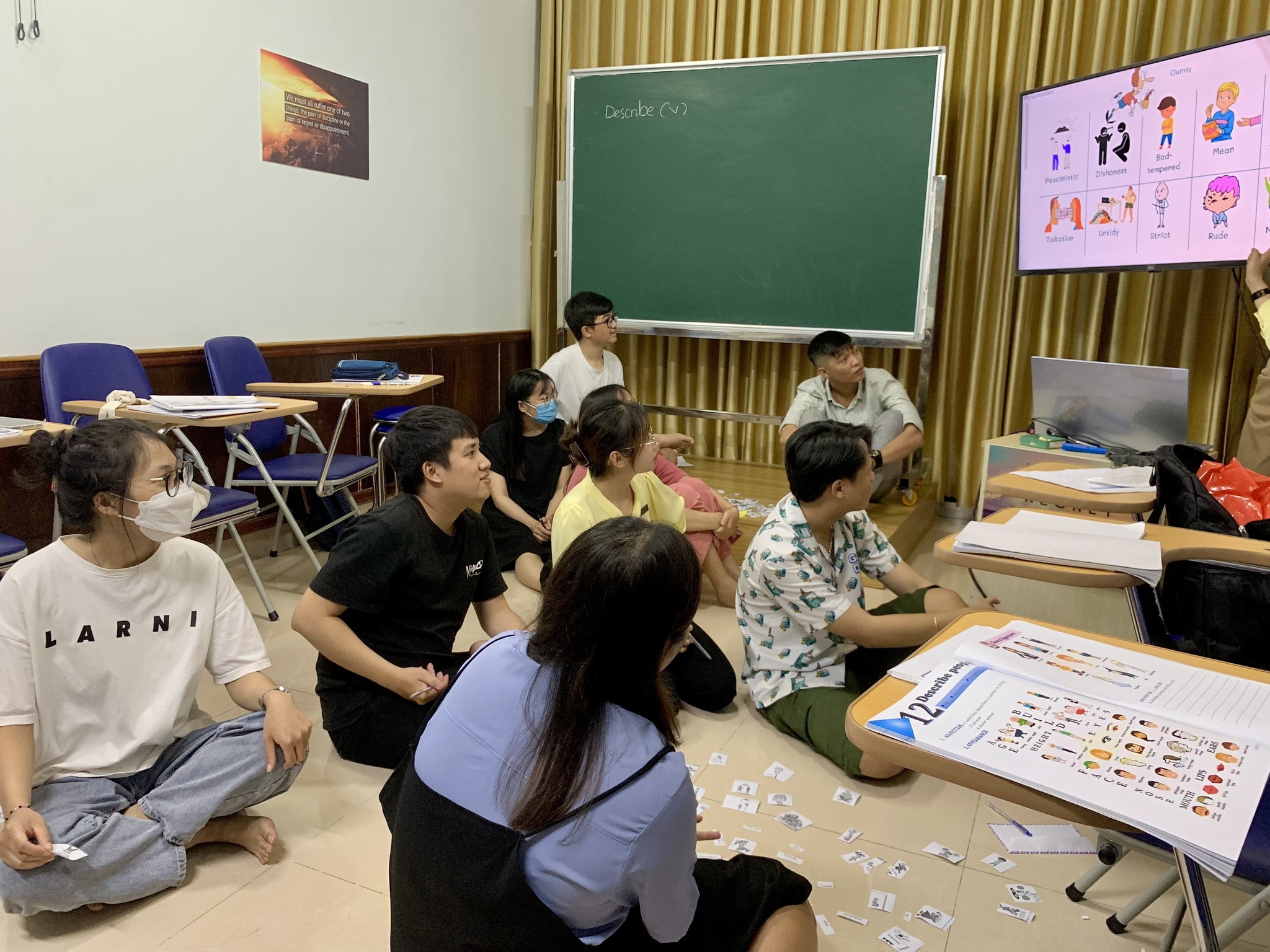[fusion_builder_container admin_label=”Content” hundred_percent=”no” equal_height_columns=”no” menu_anchor=”” hide_on_mobile=”no” class=”” id=”” background_color=”” background_image=”” background_position=”left top” background_repeat=”no-repeat” fade=”no” background_parallax=”none” enable_mobile=”no” parallax_speed=”0.3″ video_mp4=”” video_webm=”” video_ogv=”” video_url=”” video_aspect_ratio=”16:9″ video_loop=”yes” video_mute=”yes” video_preview_image=”” border_color=”” border_style=”solid” margin_top=”” margin_bottom=”” padding_top=”” padding_right=”” padding_bottom=”80px” padding_left=”” type=”legacy” border_sizes_top=”0px” border_sizes_bottom=”0px” border_sizes_left=”0px” border_sizes_right=”0px”][fusion_builder_row][fusion_builder_column type=”2_3″ layout=”2_3″ spacing=”5%” center_content=”no” link=”” target=”_self” min_height=”” hide_on_mobile=”no” class=”” id=”” background_color=”” background_image=”” background_position=”left top” undefined=”” background_repeat=”no-repeat” hover_type=”none” border_color=”” border_style=”solid” border_position=”all” padding_top=”” padding_right=”” padding_bottom=”” padding_left=”” margin_top=”0px” margin_bottom=”40px” animation_type=”” animation_direction=”left” animation_speed=”0.1″ animation_offset=”” last=”false” border_sizes_top=”0″ border_sizes_bottom=”0″ border_sizes_left=”0″ border_sizes_right=”0″ first=”true” spacing_right=”3.333333333333333%” type=”2_3″][fusion_text columns=”” column_min_width=”” column_spacing=”” rule_style=”default” rule_size=”” rule_color=”” content_alignment_medium=”” content_alignment_small=”” content_alignment=”” hide_on_mobile=”small-visibility,medium-visibility,large-visibility” sticky_display=”normal,sticky” class=”” id=”” font_size=”” fusion_font_family_text_font=”” fusion_font_variant_text_font=”” line_height=”” letter_spacing=”” text_color=”” animation_type=”” animation_direction=”left” animation_speed=”0.3″ animation_offset=””]
Kpan is the name of a kind of bench of the Ede1, made of a wooden trunk. It is often placed in a long house and used as seats for teams of gongs during important festivals or rituals. The Ede people consider the Kpan a chair of power, because solely the rich living in a very long house can own a Kpan.
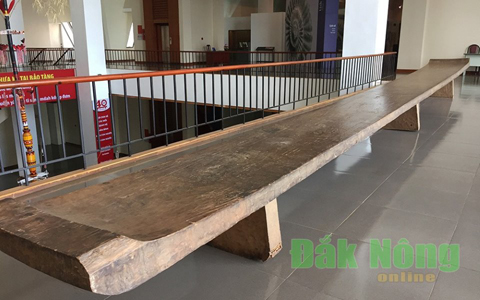
What does Kpan mean in Ede culture?
A Kpan is hewn from a single trunk with a thickness of around 8cm, a length of 5m to 15m, and a width of more and less 70 to 90cm and slightly curved at both ends to create a soft but firm appearance. Making a Kpan, which requires great collective strength, is accomplished within either 7, 11 or 13 days.
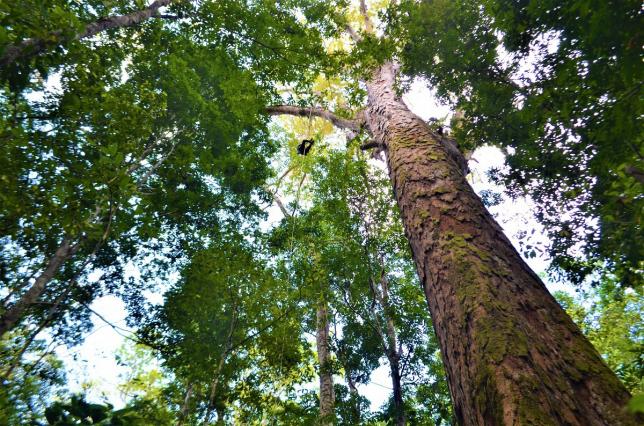
Those who want to own a Kpan not only have to prepare enough buffaloes, pigs, chickens, wine, and rice to serve people during the bench making days, but they also must organize sacrifices to pray for health.
According to Ede’s custom, finding and cutting trees down for Kpan must be discussed in advance with the wife’s family. After that, a small piece of tree bark is cut to worship the Gods for permission to cut that tree. It has to be a beautiful day to go to chop the tree down. On that day, there are not any funerals in the village. To prepare for the tree-cutting, a group of three boys and three girls dance around the tree. They wear traditional costumes: the girls with embroidered dresses and the boys with loincloths. A shaman then worships and makes the first axes to the tree to pray for a beautiful Kpan without any crack or break to be made.
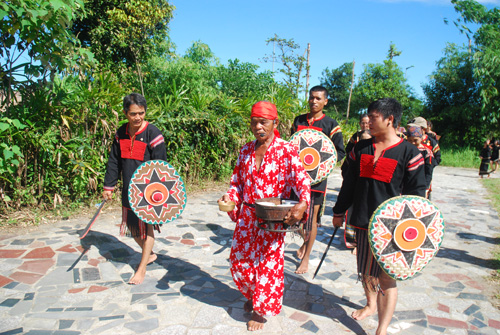
Next, a team of seven pre-selected craftsmen hold their axes and chop the tree off three times in a row. Villagers are then allowed to help cut the tree down. When the tree is clear of branches and leaves, the owner and the shaman walk onto the trunk seven times to ward off evil spirits. The seven craftsmen hew the whole trunk into a boat-shaped Kpan with a strong look.
When the bench is completed, a Kpan procession is held like a ceremony to welcome a new member to the Ede’s family. The Ede people believe that any Kpan also has a soul, so when moving home it must have new blankets and clothes.
The owner has to prepare a lot of things for the procession of the new Kpan. Women prepare blankets and brocade dresses, while men prepare loincloths and shirts to cover the new Kpan. Rượu cần2 that is at least 3 years old is also a must.

At the beginning of the procession, the relatives of the owners stand in two rows and clap their hands happily to welcome the Kpan home. When the head of Kpan reaches the foot of the stairs, the shaman steps out with a spear in his hand and then performs the ritual of placing the spear on the Kpan’s head.
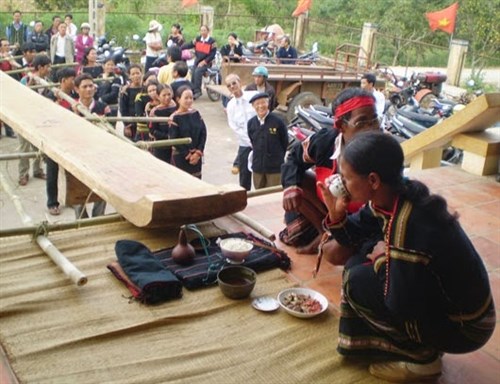
The practice helps the owner to exorcize from the Kpan so as not to harm them. Then the Kpan is moved to stilt house. The procession requires two buffaloes for the ritual: one as a sacrifice for ancestors and the other for the owner in the next day’s ritual. The owner also needs to prepare a pig and a pot of wine to worship the Kpan.
The shaman then leads the owner’s hand to walk onto the Kpan three times, which is a manifestation of domestication: from now on the owner officially possesses the Kpan. After that the others are allowed to sit on Kpan. At the same time, the sound of gongs emergs, the shaman makes a vow to proclaim to the Gods that the Kpan has had a master.
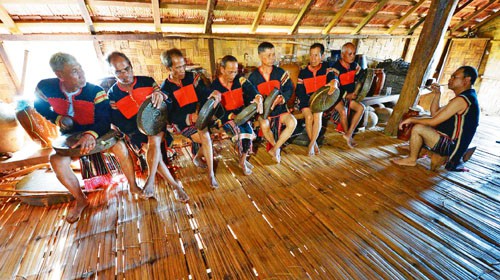
At this time, the shaman calls all the Gods such as water God, mountain God, without missing any God, invites the ancestors’ souls to attend the Kpan procession, and prays for prosperity, happiness, peace for the onwer’s family and villagers. During the Kpan procession, all relatives are expected to participate, otherwise they will be bad luck in life.
At the end of the ritual, the shaman invites the owners and villagers to drink wine and share the joy. The Ede people also believe the Kpan is an ancestral chair – a symbol of friendship. Sitting on a Kpan, hatred and class gaps are removed, only sincere feelings remain.
 [1] The Ede or the Rade is an Austronesian ethnic group of southern Vietnam
[1] The Ede or the Rade is an Austronesian ethnic group of southern Vietnam
(population 398,671 in 2019)
[2] A kind of wine stored in a jar and drunk with long bamboo straws
Collected and translated by Rosy and Ama Chuong.
[/fusion_text][fusion_text columns=”” column_min_width=”” column_spacing=”” rule_style=”default” rule_size=”” rule_color=”” content_alignment_medium=”” content_alignment_small=”” content_alignment=”” hide_on_mobile=”small-visibility,medium-visibility,large-visibility” sticky_display=”normal,sticky” class=”” id=”” font_size=”” fusion_font_family_text_font=”” fusion_font_variant_text_font=”” line_height=”” letter_spacing=”” text_color=”” animation_type=”” animation_direction=”left” animation_speed=”0.3″ animation_offset=””][/fusion_text][fusion_separator style_type=”single solid” hide_on_mobile=”small-visibility,medium-visibility,large-visibility” class=”” id=”” sep_color=”” top_margin=”30px” bottom_margin=”-10px” border_size=”2″ icon=”” icon_circle=”” icon_circle_color=”” width=”” alignment=”center” /][fusion_sharing tagline=”Share This Post!” tagline_color=”” backgroundcolor=”” title=”” link=”” description=”” icons_boxed=”” icons_boxed_radius=”” color_type=”” icon_colors=”” box_colors=”” tooltip_placement=”” pinterest_image=”” hide_on_mobile=”small-visibility,medium-visibility,large-visibility” class=”” id=”” /][/fusion_builder_column][fusion_builder_column type=”1_3″ layout=”1_3″ spacing=”5%” center_content=”no” link=”” target=”_self” min_height=”” hide_on_mobile=”small-visibility,medium-visibility,large-visibility” class=”” id=”” background_color=”#faf9f8″ background_image=”” background_position=”left top” undefined=”” background_repeat=”no-repeat” hover_type=”none” border_color=”” border_style=”solid” border_position=”all” padding_top=”7%” padding_right=”7%” padding_bottom=”7%” padding_left=”7%” margin_top=”” margin_bottom=”” animation_type=”” animation_direction=”left” animation_speed=”0.1″ animation_offset=”” last=”true” border_sizes_top=”0″ border_sizes_bottom=”0″ border_sizes_left=”0″ border_sizes_right=”0″ first=”false” spacing_left=”1.6666666666666665%” type=”1_3″][fusion_widget_area name=”avada-blog-sidebar” title_size=”” title_color=”” background_color=”” padding_top=”” padding_right=”” padding_bottom=”” padding_left=”” hide_on_mobile=”small-visibility,medium-visibility,large-visibility” class=”” id=”” /][/fusion_builder_column][/fusion_builder_row][/fusion_builder_container][fusion_global id=”1589″]

